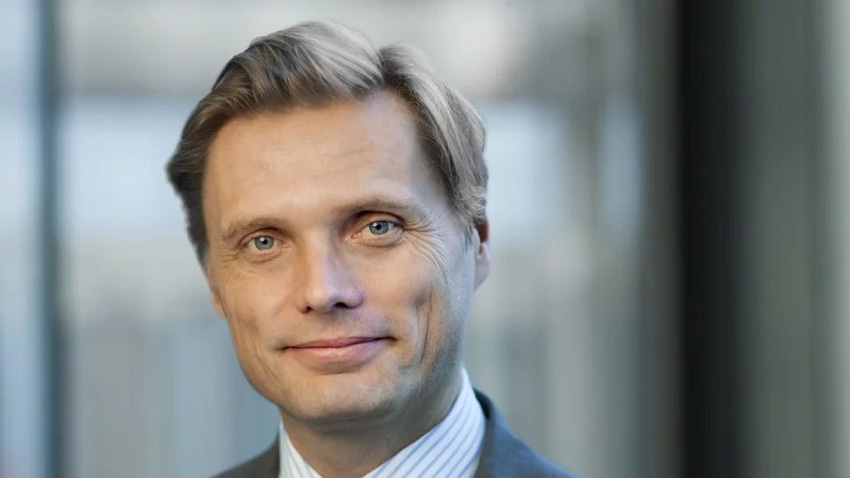Capacity may be the first 5G use-case – Ericsson EVP
At MWC 2018 we caught up with Ericsson EVP and head of its networks business Fredrik Jejdling to get a general update on the state of play there.
March 16, 2018

At MWC 2018 we caught up with Ericsson EVP and head of its networks business Fredrik Jejdling to get a general update on the state of play there.
We started by noting that Nokia CEO Rajeev Suri made an apparent dig at Ericsson in his MWC keynote by saying that people should be suspicious about any claims made regarding the easy upgrade of networking to 5G via a software update. “First of all I of course feel a bit flattered, having competitors talk about our solutions in their keynote,” said Jejdling. “That’s means we must be on to something, in my view.”
We’ll let the market decide what it thinks the best way to approach 5G is, but we did ask Jejdling to share his 5G vision. 5G went from concept to reality a lot quicker than I thought it would,” he said, explaining that on top of the well-known use-cases he thinks there’s at least one other that gets less attention.
“We also see an enhanced mobile broadband case that may not have been considered before and could become the first use-case for 5G,” said Jejdling. “If we model traffic in our existing mobile broadband networks, we thing that by 2023 we’re going to see an 8x increase, and probably the best way to cost-efficiently handle that is by introducing 5G over time. We need to build networks that can deliver 8-10x lower cost per gigabyte. Evolving 4G into 5G makes sense, from a cost efficiency perspective, as traffic grows.
“Then comes the premise of 5G as it was designed for, which is connecting things. As an industry we’re looking at this opportunistically, with the US and China ahead of Europe right now. What we try to do is to take away the decision about 5G, because if you have our networks we want to make sure you can evolve them as and when needed.
“In a year’s time the first launches will have happened and we’ll be talking about applying 5G for real, which could mean VR applications, industrial use-cases such as robotics in manufacturing and IoT. We will be talking a lot more about the applications, rather than technology, of 5G. The silver bullet is very difficult to identify right now, which is why I think you need to be very pragmatic and listen to the market.”
We then moved on to Ericsson in general, and noted it has been a tricky couple of years for the company. Borje came in January last year and we’ve been going through what we call a more focused strategy, which means that we focus on the three areas of: networks, digital services and managed services,” said Jejdling.
“On networks we have significantly increased our investment in R&D by around 20% to firstly be able to get cost-efficient production platforms out on 4G, to meet the cost-per-gigabyte requirements of an operator. And then the second part of that increase in investment is 5G. It is, of course, important for us to be the 5G technology leader. So we have put a significant amount of investment both into the millimetre wave side, which is typically where the US is going, but also the mid-band side where you’ve got China, Japan and Korea.
“Our 2017 has been a year of transformation and it has been a challenging year, there’s no doubt about that. On the other hand I think it’s fair to say that we’ve improved our cash position by 5 billion SEK throughout the year. So I would say that we have transformed the company during this year, with 17,000 people leaving, recruiting 2,000 people in R&D and the assessments of certain projects. We will have finalised the cost reduction programme by the middle of this year.
“We’ve had a RAN market that declined by around 8% in 2017 and we more or less followed that. This year we expect it to be down around 2%, after that we expect it to be flattening and going up. Our ability to drive new platforms and technologies has enabled us to rank fairly highly in customer evaluations, which enabled us to win a few significant deals, such as Deutsche Telekom in Germany, Vodafone in the UK, Verizon 5G, Swisscom and a couple of others.”
Jejdling wisely didn’t attempt to brush his company’s recent struggles under the carpet but, as you would expect, he was keen to promote the narrative that things should improve from here. It’s clearly not enough to just wait for the market to pick up and Ericsson has done a lot of cost-cutting, but having said that it wants to be able to capitalise on increased activity as soon as it happens.
We finished by asking Jejdling if he had any message for Telecoms.com readers. We’re in a stronger position than we were a year ago,” he said. “We’re investing in the front-end with the customer and in the R&D side, and between them we have been looking at efficiencies like any company would. We live and die by talent and I think it’s a very interesting place to be. We’re a company that is recruiting top talent and my message to your readers is that we’re looking for people who want to be part of growing this company.”
About the Author(s)
You May Also Like









.png?width=300&auto=webp&quality=80&disable=upscale)

_1.jpg?width=300&auto=webp&quality=80&disable=upscale)


.png?width=800&auto=webp&quality=80&disable=upscale)